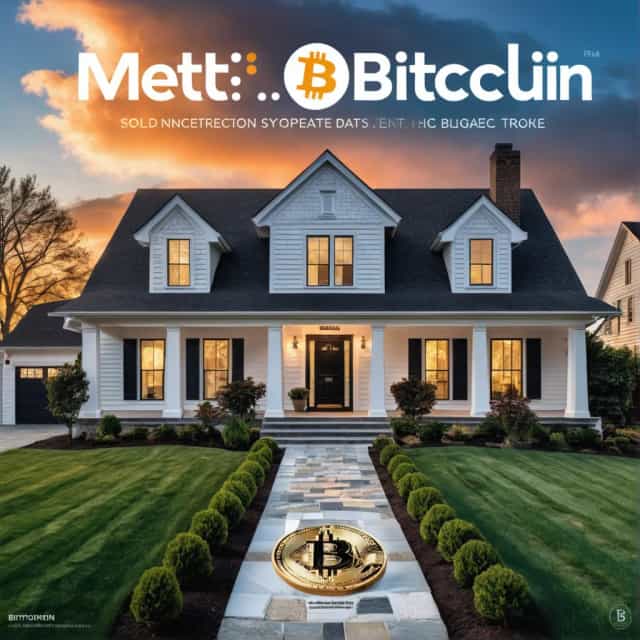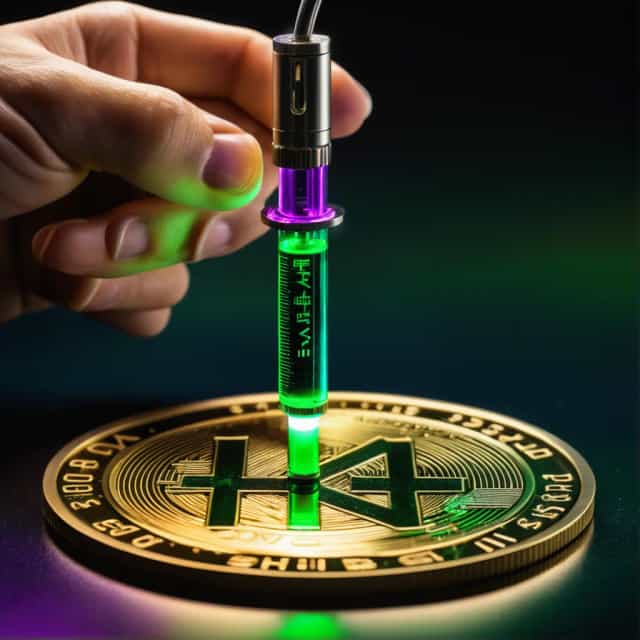
출처: Block Media
Eric Trump Champions Digital Assets as Catalyst for US Dollar Strength
Eric Trump, son of former President Donald Trump and a vocal proponent of digital assets, is convinced that the rise of cryptocurrencies and blockchain technology holds immense potential to bolster the US dollar’s global position. Sharing his perspective in an exclusive interview with the Financial Times (FT), Trump stated, “If demand for digital assets grows, trillions of dollars of volatile currencies around the world could flow into the United States and strengthen the dollar.” By integrating these innovative technologies into the financial ecosystem, he believes it could trigger a notable influx of foreign capital, stabilizing and empowering the dollar on the global stage.
His remarks coincided with a major milestone as he rang the opening bell at Nasdaq in celebration of the public debut of American Bitcoin, a company focused on digital assets and blockchain advancements. Trump has reportedly invested over $500 million in the firm, underscoring his commitment to revolutionizing the financial system. “Mining Bitcoin domestically and achieving financial independence within the United States is a direct move to rescue the dollar,” he added, highlighting blockchain’s potential to reduce the nation's reliance on foreign digital infrastructure.
The Trump Family’s Deep Dive into Digital Asset Ventures
The Trump family has strategically expanded their footprint in the digital asset space over recent years, leveraging their political influence and media presence. Among their most notable ventures are the Truth Social Bitcoin ETF, meme coins like MELANIA and TRUMP, and financial initiatives spearheaded by Trump Media & Technology Group and World Liberty Finance (WLFI).
WLFI has been particularly successful, raising approximately $500 million through its proprietary WLFI token while advancing blockchain integration into global finance. The company has also rolled out a dollar-pegged stablecoin, USD1, which demonstrates a broader ambition to create compatibility between digital assets and the dollar to attract institutional-level investments. USD1 has already been used in multi-billion-dollar transactions, showcasing its scalability within both domestic and international finance.
Eric Trump touched on the popularity of meme coins—playful digital currencies that align with public figures or cultural moments. “Meme coins are a form of entertainment,” he explained, pointing to their unique blend of fan-based engagement and speculative investment. “People want to bet on a coin or individual they admire, or they might simply want to own a small digital asset tied to someone they respect deeply.” Additionally, such initiatives allow the Trump family to sidestep dependency on traditional finance institutions like Wall Street, underscoring their emphasis on independence and decentralization.
Digital Assets and the Dollar: Strength Through Innovation
The US dollar has had a turbulent year, facing pressures such as trade imbalances, interest rate cuts, soaring national debt, and waning investor confidence. These challenges have led financial observers to consider alternatives to traditional reserve currencies, with digital assets emerging as a viable solution.
Eric Trump views cryptocurrencies like Bitcoin (BTC) and Ethereum (ETH) as reliable mediums of value migration and decentralized wealth storage. Boasting capped supplies—Bitcoin, for instance, is limited to 21 million coins, further constricted by its halving mechanism—these assets avoid inflationary risk while catering to global demand. Their applicability and scarcity provide them with stability that could enhance the overall credibility of the dollar amidst mounting economic uncertainties.
Stablecoins: A Key to Sustaining Dollar Dominance
Stablecoins, specifically those pegged to the US dollar like USD1, represent an essential element in fortifying the dollar’s dominance. By merging the cryptocurrency market with dollar-backed digital tokens, stablecoins offer transactional stability and liquidity necessary for high-frequency adoption. Under regulatory initiatives such as the Trump-supported Executive Order 14178 and GENIUS Act, frameworks are being implemented to align digital assets with US-dollar legitimacy, fostering trust and adoption.
Echoing this sentiment, U.S. Treasury Secretary Scott Besant remarked, “The dollar now has a native payment network compatible with the internet, and this groundbreaking technology will support the dollar’s status as the world’s reserve currency.” Such innovations are viewed as critical steps in bridging the gap between traditional fiat systems and emerging blockchain-driven economies.
Expert Debate: The Dollar’s Role in a Digital Age
Despite the optimism surrounding digital assets, not all experts agree on their benefits for maintaining dollar hegemony. Jeremy Siegel, chief economist at WisdomTree and a professor at Wharton, has expressed caution, suggesting that Bitcoin may undermine rather than support the dollar. Siegel argued that blockchain-based payment networks could rival fiat-centric systems by offering faster and more efficient solutions for cross-border remittances, potentially marginalizing dollar-led transactions.
Bitcoin’s positioning as “digital gold” due to its limited supply and independent valuation also poses a challenge to traditional fiat currencies, fueling debate on whether decentralized assets complement or threaten the foundational principles of the global financial system. While stablecoins provide a bridge between crypto and fiat, questions linger about their long-term impact on authority-driven monetary systems.
Conclusion: An Era of Transformation
The Trump family’s bold endorsement of digital assets reflects a growing belief that cryptocurrencies and stablecoins are tools to innovate and strengthen the US dollar—ensuring strategic advantage in an increasingly digitized global economy. From Bitcoin mining initiatives to stablecoin development and legislative support, these forward-thinking steps underscore the possibilities inherent in harnessing blockchain for financial evolution. Yet, as contrasting views emerge, it is clear the path forward will require balancing risk, regulation, and opportunity.
For real-time updates on blockchain developments and financial news, follow Block Media on Google News or join our Telegram channel to stay ahead in this rapidly evolving field.










